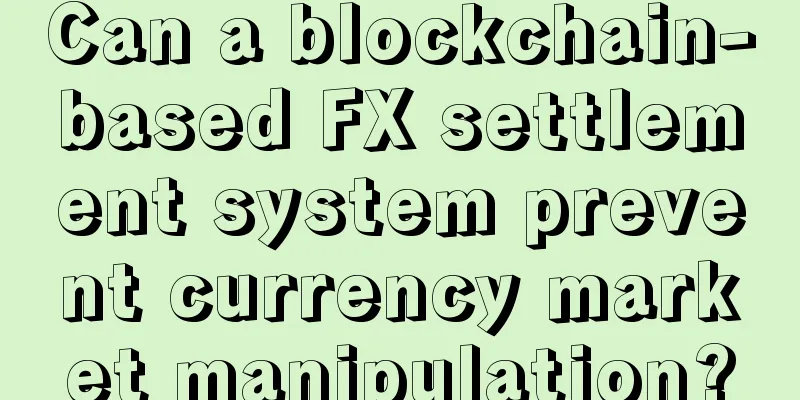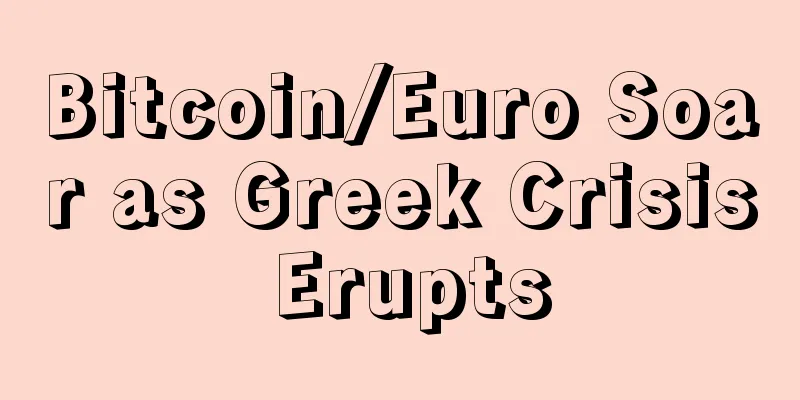Can a blockchain-based FX settlement system prevent currency market manipulation?

|
But this price is often manipulated by colluding traders who submit orders to move the price up or down during this one-minute pricing window according to their needs. The foreign exchange market investigation not only damaged the reputation of the banks involved, but also resulted in huge fines, and many people began to question the way regulators monitor the currency market. This also raises the question of whether foreign exchange settlement systems based on public ledger technology (blockchain) can prevent future currency market manipulation. London-based fintech startup Cobalt DL has provided a solution. Cobalt DL is committed to using blockchain technology to redesign post-trade processing for institutional foreign exchange market participants to reduce settlement costs and replace inefficient traditional post-trade infrastructure. To bring this innovation to market, Cobalt DL has partnered with blockchain company SETL. SETL’s CEO Peter Randell stressed that the project is more than just a proof of concept, but will be “an initiative to make distributed ledger technology profitable.” Currently, for a single FX transaction, the existing post-trade infrastructure creates multiple transaction records for the buyer, seller, broker, clearing house and third parties involved. By replacing the creation of a single shared view of every currency transaction, the Cobalt DL platform frees up back-end and middle-office resources that are occupied by continuous reconciliation in multiple systems. The Cobalt DL platform is designed to integrate with all trading venues, significantly reducing the existing traditional FX infrastructure costs. Andy Coyne, Co-founder of Cobalt DL, said: “The emergence of cutting-edge technologies like distributed ledgers is providing financial market participants with an alternative to the inflexible post-trade infrastructure. Cobalt DL’s combination of market expertise and forward-thinking technology is poised to shake up the post-trade space and significantly reduce costs for market participants.” Cobalt DL has begun testing its blockchain-based peer-to-peer (P2P) foreign exchange post-trade processing platform with eight institutional FX market participants, including the company’s key technology services partner and investor First Derivatives, ahead of its official launch in 2017. With a global ledger accessible to all currency transactions, market participants can be better held accountable for their trades as such a system will help regulators monitor for manipulative trading practices. It will undoubtedly take a long time to use blockchain to resolve multi-billion dollar currency market transactions, but it will also prevent fraud and manipulation by future market participants. |
<<: Steemit surpasses 100,000 users, the team plans to vigorously rescue the falling Steem token
>>: 42 Japanese banks join remittance blockchain alliance launched by SBI Group
Recommend
Miner operation record: Filecoin test network mining only takes 13 steps
Recently, the decentralized storage project Filec...
BCH contract forced delivery on the eve of the fork
In less than 24 hours, Bitcoin Cash will face a l...
Palmistry or face reading, which one are you more interested in?
In physiognomy, there are palmistry and face readi...
What does a mole on the heel mean? Is it good for a woman to have a mole on her right heel?
Moles may appear in many places that you may not ...
Blockchain technology actually pronounces the death of traditional database technology
The blockchain mechanism of Bitcoin is actually a...
How to analyze the palm lines of a newborn baby
Reading palm lines has a long history, and by rea...
The fate of people with birthmarks on their arms is divided into the inner and outer sides.
Birthmark is a relatively common thing. In fact, ...
What kind of face does a man have? He is greedy and only has money in his eyes.
Today's society is full of temptations, and m...
The wisdom line is staggered in the middle to form two
The wisdom line on the palm is staggered in the m...
A full review of the 619 Bitmain closed-door meeting
Recently, Bitmain held a closed-door meeting on t...
What does a mole on the thumb mean?
Hands are a very important part of our life, and ...
What kind of face does a woman look like?
Some people are born with a golden key in their m...
Will a scar on the forehead affect wealth? How to improve wealth?
I believe everyone has the chance to experience b...
Is the original hand good?
Is the original hand good? We all know that every...
What are the facial features of people with high emotional intelligence?
We must have heard the phrase "Appearance is...









